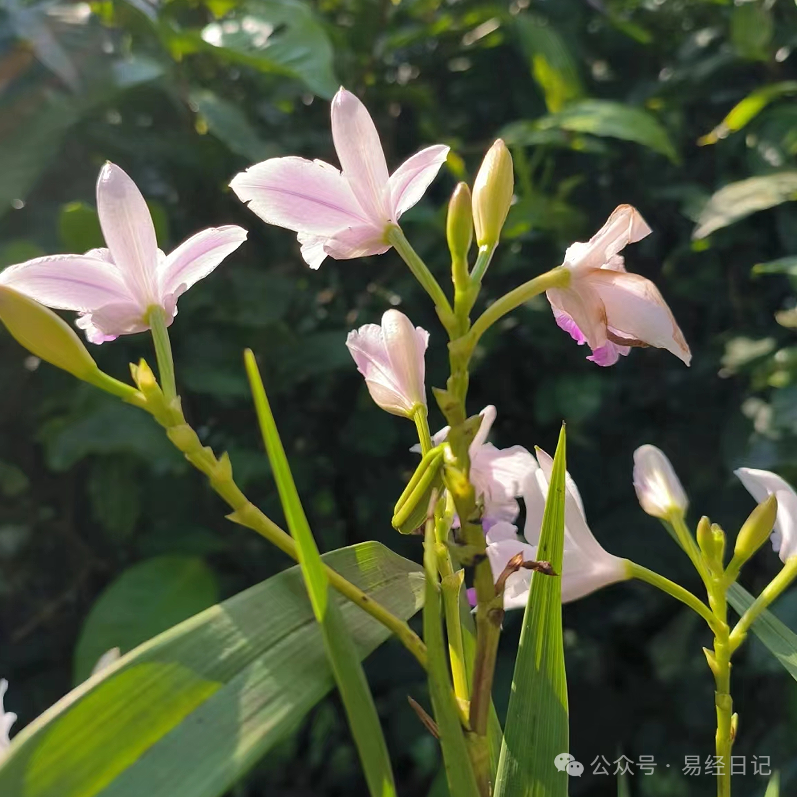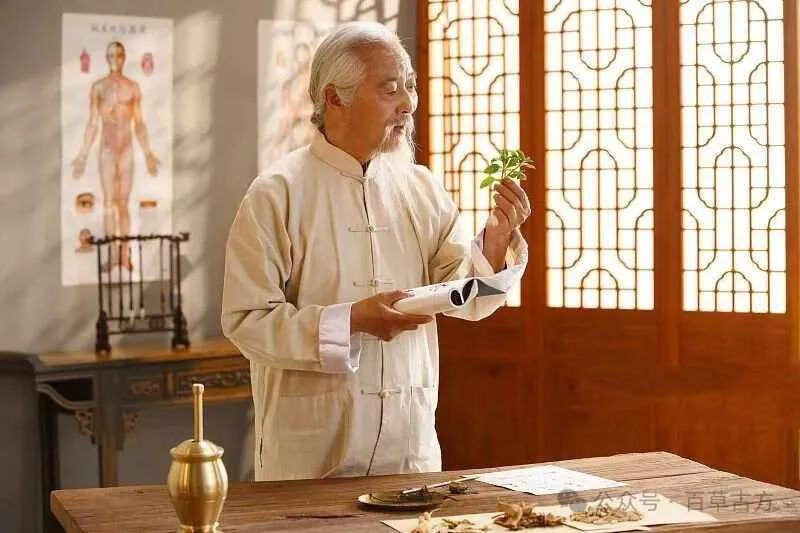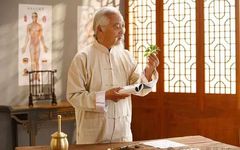 WeChat: 873324412
WeChat: 873324412
Daily sharing of traditional Chinese medicine health culture
Classic Herbal Formulas
Yin deficiency primarily manifests as: emaciation, dry mouth and throat, dizziness and insomnia, red tongue with thin pulse, often accompanied by symptoms of five hearts heat, tidal fever, and night sweats, indicating an inability of Yin to control Yang and the internal generation of heat;
Yang deficiency primarily manifests as: fatigue, shortness of breath, lethargy, weak pulse, often accompanied by cold limbs, pale complexion, lack of thirst, clear urine, loose stools or urinary retention, and pale tongue, indicating an inability of Yang to recognize Yin, with internal accumulation of cold.

Chinese Patent Medicines for Yin Deficiency:
1. **Liver Yin Deficiency**: Patients with liver Yin deficiency primarily exhibit symptoms such as headaches, dizziness, tinnitus, blurred vision, irritability, or numbness in limbs. When these symptoms occur, it is advisable to follow medical advice and use nourishing liver Yin patent medicines such as **Qi Ju Di Huang Wan** (Lycium Fruit and Chrysanthemum Pill) and **Ci Dan Jiao Nang** (Cidan Capsules);
2. **Kidney Yin Deficiency**: Kidney Yin deficiency is well-known among the public, primarily manifesting as soreness and weakness in the lower back and knees, weakness in the limbs, tidal fever, night sweats, and a flushed complexion. In men, it may be accompanied by premature ejaculation, while women may experience menstrual irregularities. Commonly used patent medicines for nourishing kidney Yin include **Liu Wei Di Huang Wan** (Six Flavor Rehmannia Pill), **Zhi Bai Di Huang Wan** (Anemarrhena and Phellodendron Pill), and **Zuo Gui Wan** (Left Return Pill);
3. **Stomach Yin Deficiency**: Stomach Yin deficiency, also known as spleen and stomach Yin deficiency, is primarily caused by the depletion of Yin fluids in the spleen and stomach. Patients may present with dry mouth, lack of appetite, constipation, and even dry retching. At this time, it is advisable to follow medical advice and use patent medicines that nourish Yin and harmonize the stomach, such as **Shen Mei Yang Wei Ke Li** (Ginseng and Plum Stomach Granules) and **Yang Wei Shu Ke Li** (Stomach Comfort Granules), or use **Yi Wei Tang** (Stomach Benefit Decoction) for treatment;
4. **Lung Yin Deficiency**: Patients with lung Yin deficiency typically present with dry cough, dry throat, hemoptysis, tidal fever, night sweats, and a flushed complexion. Generally, patients with chronic cough and deficiency often exhibit lung Yin deficiency. It is recommended to follow medical advice and take some patent medicines that nourish lung Yin, such as **Qing Fei Hua Tan Wan** (Clear Lung and Transform Phlegm Pill) and **Yu Ping Feng Kou Fu Ye** (Jade Screen Wind Oral Liquid) for treatment.
Patent Medicines for Yang Deficiency: **Jin Kui Shen Qi Wan**, **You Gui Wan**, **Gui Fu Di Huang**, **Qi Wei Du Qi Wan**, **Ji Sheng Shen Qi Wan**, **Zhi Bao San Bian Wan**, **Si Shen Wan**, **Qing E Wan**, **Wu Zi Yan Zong Wan**, **Gui Lu Bu Shen Wan**, etc.
Representative Formulas for Both Yin and Yang Deficiency:
**Gui Zhi Long Gu Mu Li Tang** (Cinnamon Twig, Dragon Bone, and Oyster Shell Decoction), from the **Jin Kui Yao Lue** (Essential Prescriptions of the Golden Chamber), is a famous formula for treating the symptoms of both Yin and Yang deficiency, such as “men losing essence and women having dreams of intercourse.” This formula harmonizes Yin and Yang, subdues Yang, consolidates and connects the heart and kidney. The original text states: “In cases of loss of essence, the lower abdomen is tight, the Yin head is cold, dizziness (or pain in the eye socket), hair loss, and the pulse is extremely weak and thin, indicating loss of essence and blood. If the pulse is thin and tight, it indicates loss of essence in men and dreams of intercourse in women; Gui Zhi Jia Long Gu Mu Li Tang is the main treatment for this.”
Patent Medicines for Both Yin and Yang Deficiency:
**Zuo Gui Wan**: Nourishes kidney Yin, primarily used for treating kidney Yin deficiency.
**You Gui Wan**: Warms and supplements kidney Yang, fills essence and stops leakage, primarily suitable for kidney Yang deficiency.
**Da Bu Yin Wan**: Nourishes Yin and lowers fire, supplements kidney and fills essence, suitable for those with a constitution of Yin deficiency.
**Di Huang Yin Zi**: Nourishes Yin, supplements kidney, opens orifices, and transforms phlegm, suitable for those with obvious Yang deficiency symptoms.
**Gui Lu Er Xian Jiao**: Nourishes Yin, fills essence, and benefits Qi and strengthens Yang; suitable for those with both Yin and Yang deficiency.
**Qi Bao Mei Ran Dan**: Benefits liver and kidney, darkens hair and strengthens bones; suitable for those with both liver and kidney Yin and Yang deficiency.

Symptoms of Excess Heat:
Frequent occurrences of heat, acne on the face, oral ulcers, sore throat, dry and itchy eyes are common, and sometimes there may be gum bleeding or nosebleeds…
Symptoms of Excess Cold:
Loose stools, coldness in the lower back and knees, cold hands and feet, frequent urination, and menstrual pain due to cold in the uterus…
In simple terms, excess heat and excess cold are a series of symptoms caused by the obstruction of the middle burner, excess Yin below, and floating Yang above.
It is important to remember that excess heat and excess cold do not necessarily indicate severe Yang deficiency; rather, it suggests that the fire within the body is not being utilized.
True Yang deficiency will present as a general feeling of coldness throughout the body, not just in the lower half.
Yin deficiency is hard to fill, while Yang deficiency is easy to recover; those who are good at supplementing Yang must seek Yang within Yin; those who are good at supplementing Yin must seek Yin within Yang. — **Jing Yue Shan Ren**
Representative Formulas for Excess Heat and Excess Cold:
1. **Zhi Zi Gan Jiang Tang**: Used for stomach heat and spleen cold;
2. **Huang Lian Tang**: Used for stomach heat and intestinal cold.
3. **Wu Mei Wan**: Used for heat obstructing the body.
4. **Huang Qin Ren Shen Tang**: Used for both Yin and Yang deficiency.
5. **Ma Huang Tang**: Used for relief and regulation.
6. **Gan Cao Xie Xin Tang**: Benefits Qi and harmonizes the stomach, resolves fullness and stops vomiting.
7. **Gui Zhi Chai Hu Gan Jiang Tang**: Harmonizes and disperses cold, generates fluids and restrains Yin.
8. **Yin Huo Tang** (Return Fire to the Source): Renowned Qing Dynasty physician Chen Shiduo stated that the kidney is the organ of water and fire, where Yin and Yang coexist. Generally, this Yang should be hidden within Yin, nurturing and warming the body from below, similar to how a stove cooks rice, as organized by the great treasure of TCM.
Generally, the occurrence of excess heat and excess cold is due to the obstruction of Qi and blood in the body. Acupuncture and moxibustion in TCM can be used for treatment, and it is important to eat a light diet. Choose the correct and healthy adjustment method according to the doctor’s advice.
Symptoms of Alternating Cold and Heat:
Fever and chills alternating in a type of heat pattern, where during fever, one feels hot without feeling cold, and during chills, one feels cold without feeling hot. Severe cases may present with high fever and chills, fatigue, body aches, headache, thirst, and sweating after fever with a cool body, recurring episodes, and a wiry pulse, indicating malaria. This is caused by the invasion of malarial pathogens and the struggle between the evil and the righteous.
Often accompanied by fullness in the chest and hypochondrium, lack of appetite, irritability, nausea, bitter mouth, dry throat, dizziness, and a wiry and thin pulse, indicating a Shao Yang disease pattern. This is caused by the invasion of Shao Yang by pathogens and the struggle between the evil and the righteous, as organized by the great treasure of TCM.
Formulas for alternating cold and heat, as well as excess heat and excess cold, include **Xiao Chai Hu Tang**, **Huang Lian Tang**, **Wu Mei Wan**, **Gan Jiang Huang Qin Huang Lian Ren Shen Tang**, **Ma Huang Sheng Ma**.
Treatment Method 1:
**Xiao Chai Hu Tang** is the representative formula for the “alternating cold and heat” pattern. The **Shang Han Lun** states: “In cases of cold damage for five or six days, with wind, alternating cold and heat, fullness in the chest and hypochondrium, lack of appetite, irritability, and nausea… Xiao Chai Hu Tang is the main treatment for this.” This formula is the “key remedy for Shao Yang, harmonizing the exterior and interior,” composed of **Chai Hu** (Bupleurum), **Huang Qin** (Scutellaria), **Ban Xia** (Pinellia), **Ren Shen** (Ginseng), **Gan Cao** (Licorice), **Sheng Jiang** (Fresh Ginger), and **Da Zao** (Jujube). This formula primarily harmonizes the exterior and interior, regulates the Qi mechanism of the Shao Yang gallbladder channel, and ensures the smooth entry and exit of Qi. It also considers the up and down movement of the Shao Yang San Jiao channel. The **Shang Han Lun** states: “When the upper burner is unobstructed, the fluids descend at night, the stomach Qi harmonizes, and the body sweats and resolves.” This indicates that after using **Xiao Chai Hu Tang**, the Qi mechanism of the Shao Yang gallbladder channel is smooth, allowing the upper burner to clear, the middle burner to harmonize, and the fluids to distribute, leading to smooth bowel movements and urination, and sweating from the pores.
Alternating cold and heat is one of the symptoms of Shao Yang disease. Both **Hao Qing Qing Dan Tang** and **Xiao Chai Hu Tang** can treat the “alternating cold and heat” of Shao Yang disease. They have similarities, but **Hao Qing Qing Dan Tang** treats warm diseases with damp-heat in the San Jiao Qi division, while **Xiao Chai Hu Tang** treats cold damage in the Shao Yang gallbladder channel.
Treatment Method 2:
**Hao Qing Qing Dan Tang** is from the **Revised Common Cold and Fever Treatise**, composed of “Qing Hao (Artemisia Annua) 1.5-2 qian, Huang Qin (Scutellaria) 0.5-3 qian, Chen Pi (Tangerine Peel) 0.5 qian, Xian Ban Xia (Pinellia) 0.5 qian, Chi Fu Ling (Poria) 3 qian, Bi Yu San (including talc, licorice, and indigo) 3 qian, Sheng Zhi Ke (Unripe Bitter Orange) 0.5 qian, Dan Zhu Ye (Lophatherum) 3 qian.” **Hao Qing Qing Dan Tang** harmonizes the exterior and interior and is a representative formula for treating the Shao Yang channel. This formula treats damp-heat obstructing the Shao Yang, with heat being heavier than dampness, primarily affecting the hand Shao Yang, and also involving the foot Shao Yang. Clinical manifestations include alternating cold and heat like malaria, with “heat heavier than cold, fullness in the stomach, bitter mouth, sour vomiting, or vomiting sticky phlegm, chest and hypochondrium distension and pain, yellow and scanty urine, red tongue with greasy coating, left pulse wiry and rapid, right pulse slippery and rapid, etc.” Modern applications include treating damp-heat obstructing the Shao Yang and loss of control in the San Jiao Qi transformation.
In fact, alternating cold and heat can also be seen in internal injuries: The **Tai Ping Hui Min He Ji Ju Fang** discusses **Xiao Yao San** for treating blood deficiency and fatigue… and blood heat clashing, menstrual irregularities, abdominal distension and pain, alternating cold and heat like malaria. This blood heat is not due to external pathogens but rather due to Qi stagnation causing heat. The alternating cold and heat treated by **Xiao Yao San** is evidently an internal injury rather than an external pathogen. From a modern medical perspective, alternating cold and heat can be seen in endocrine disorders, such as hypothyroidism and menopausal syndrome. For internal injury-related alternating cold and heat, Zhang Xichun has unique clinical experience:
1. Extreme Cold and Heat from Organ Deficiency:
The liver and gallbladder are interdependent; the gallbladder is Shao Yang, and when it is diseased, it leads to alternating cold and heat; the liver is Jue Yin, and extreme deficiency also leads to alternating cold and heat. The liver stores blood and houses the fire of the heart, being Yin in nature but using Yang. When the liver is extremely deficient, it is in a dangerous state, leading to a loss of balance between Yin and Yang, resulting in alternating cold and heat, with profuse sweating. The formula used is **Lai Fu Tang**.
2. Great Qi Descending Leading to Alternating Cold and Heat:
The great Qi fills the chest, governing the respiratory Qi of the lungs, supporting the entire body, and serving as the mainstay of all Qi. When the great Qi in the chest descends, one may experience shortness of breath, difficulty breathing, or alternating cold and heat. During this time, the cold and heat arise because the great Qi in the chest, which is the Yang Qi of the upper burner, is descending. When it first descends, the Yang Qi is stagnant and not smooth, leading to cold; after descending, the Yang Qi accumulates and desires to express, leading to heat. The formula used is **Sheng Fan Tang**.
3. Qi Stagnation and Blood Deficiency Leading to Alternating Cold and Heat:
Women often experience worry and anxiety, leading to many blockages in the organs and meridians, obstructing the Yang Qi from expressing outward, resulting in coldness throughout the body! When the Yang Qi accumulates to an extreme, it will eventually erupt, and the mechanism of this eruption and the force of obstruction will interact and clash within the organs and meridians, leading to the generation of heat, thus causing alternating cold and heat. The formula used is **Yu Zhu Tang**. The alternating cold and heat treated by **Xiao Yao San** is similar to this.
4. Menstrual Disorders Leading to Alternating Cold and Heat:
Women with amenorrhea and masses may experience Yin deficiency leading to heat and Yang deficiency leading to cold, resulting in alternating cold and heat due to obstruction of Qi transformation. The formula used is **Li Chong Tang**.
Formulas for Alternating Cold and Heat, as well as Excess Heat and Excess Cold:
Representative formulas for alternating cold and heat, as well as excess heat and excess cold, include **Xiao Chai Hu Tang**, **Huang Lian Tang**, **Wu Mei Wan**, **Gan Jiang Huang Qin Huang Lian Ren Shen Tang**, **Ma Huang Sheng Ma Tang**, **Zhi Zi Gan Jiang Tang**.
**Xiao Chai Hu Tang**: Originating from the **Shang Han Za Bing Lun** (Treatise on Cold Damage and Miscellaneous Diseases). Its main effects are to harmonize Shao Yang, harmonize the stomach, and descend rebellious Qi.
**Huang Lian Tang**: For cold damage, with heat in the chest, evil Qi in the stomach, abdominal pain, and a desire to vomit. Heat in the chest, desire to vomit, yellow tongue coating, indicates heat in the chest; abdominal pain, bowel sounds, diarrhea, and a tight pulse indicate cold in the stomach. This pattern arises from heat in the chest and cold in the stomach, leading to a loss of control in ascending and descending. The bitter cold of **Huang Lian** clears heat in the chest; the spicy warmth of **Gan Jiang** removes cold in the stomach. Together, these two herbs harmonize the upper and lower, balancing cold and heat. **Ban Xia** harmonizes the stomach and descends rebellious Qi, while **Gui Zhi** warms Yang and raises clear Qi, restoring the balance of ascending and descending, ensuring the stomach and intestines are harmonious. **Dang Shen** and **Da Zao** tonify the middle and benefit Qi, assisting in driving out evil. **Gan Cao** harmonizes all the herbs.
**Wu Mei Wan**: A formula for treating mixed cold and heat, specifically for the symptoms of mixed cold and heat. **Wu Mei** (Mume), **Chuan Jiao** (Sichuan Pepper) kill parasites and expel roundworms; **Huang Lian** and **Huang Bai** clear heat and dry dampness; **Gui** (Cinnamon) and **Fu** (Aconite) warm the middle and disperse cold; **Ren Shen** and **Dang Gui** tonify Qi and harmonize blood.
**Gan Jiang Huang Qin Huang Lian Ren Shen Tang**: For cold damage, originally cold, and the physician vomits and purges; if cold is severe, it leads to reverse vomiting and purging, with food entering the mouth and immediately vomiting, indicating stomach deficiency and guest heat fullness.
**Ma Huang Sheng Ma Tang**: For cold lasting six or seven days, after severe purging, the pulse is deep and slow, with cold extremities, and the lower pulse is absent, with throat and pharynx not smooth, spitting out pus and blood, and persistent diarrhea; this is difficult to treat, and **Ma Huang Sheng Ma Tang** is the main treatment.
**Xiao Chai Hu Tang** focuses on harmonizing initial diseases; **Wu Mei Wan** is used for chronic illness with deficiency and alternating cold and heat; **Gan Jiang Huang Qin Huang Lian Ren Shen Tang** focuses on vomiting and inability to eat; **Ma Huang Sheng Ma Tang** focuses on severe excess heat and severe excess cold, with symptoms of bleeding from the mouth and nose, as organized by the great treasure of TCM.
Each person’s symptoms and diagnosis vary, so please consult a professional physician for specific medication.
Hand diagnosis consultationWeChat: 873324412
Disclaimer:This content is for reference only and should not be used for medical diagnosis or clinical use.

